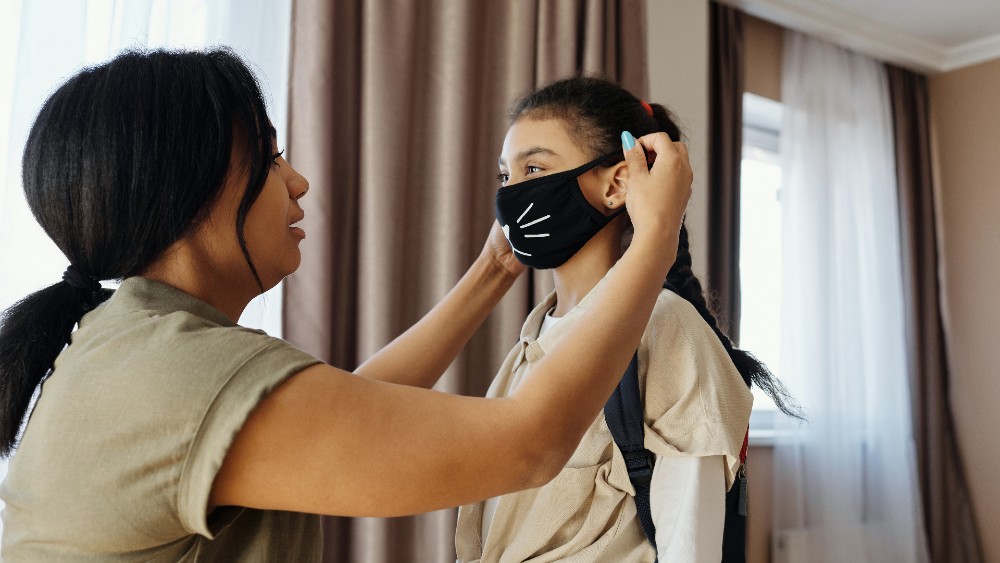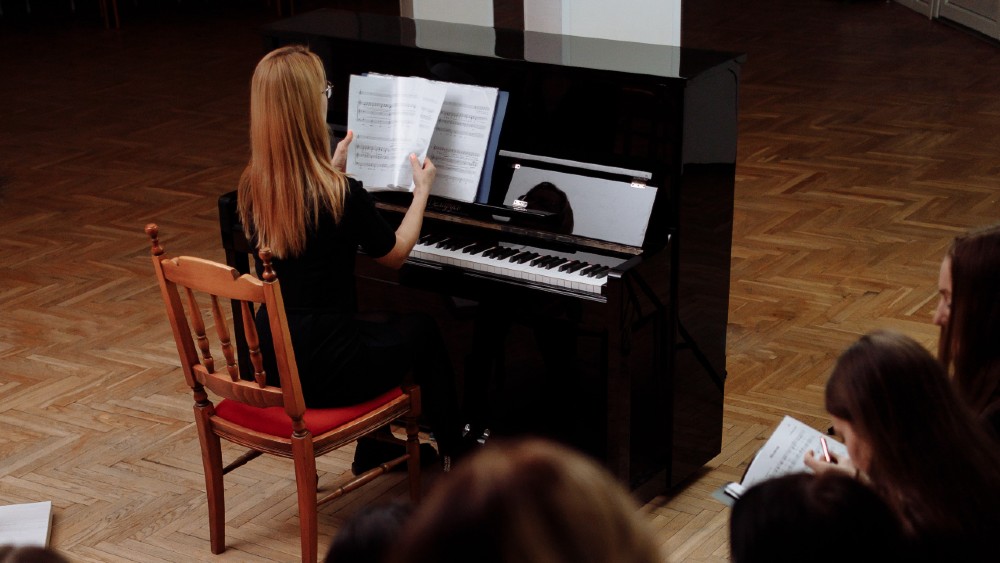
One of my great joys in life is that I get to teach music (and many other important life things) to young minds in a public middle school setting. In March, when schools were closed, so little was known about coronavirus and how it would affect our nation.
I teach in rural North Carolina, where even the office staff at my school building had a hard time wearing masks as the new school year started. When my district decided to adopt a hybrid model so that students could come back to the school buildings, I knew that if some of the adults I work with were having a hard time following a state mask mandate, the students would be even more difficult to convince.
Additionally, with singing in groups getting such a poor review in the earliest coronavirus aerosol studies, I knew I needed to plan creatively in my new school learning environment.
Disclaimer: The observations in this article are my own, from my own school district, and may or may not represent the experiences of teachers who work in different school settings than my own. I do not aim to offend anyone who does or does not wear a mask, but only to offer insights into singing in a public school setting where masks are required.
Things That Had to Be Different
My first change to my classroom was to mark out six-foot squares. I needed to know the max capacity for the room we were rehearsing in with appropriate social distancing. This set up is difficult for a number of reasons, including cutting the size of my choirs to half and making it more difficult for singers to hear one another during rehearsals.
I also marked a secondary rehearsal space with six-foot floor markers so that when we needed to allow one space to ventilate, I had an alternate area where we could sing safely.
The First Few Days
When my choir classes met for the first time in our hybrid model, my students were still mentally, emotionally, and socially 5th-7th graders who had been ripped away from school just before major spring events.
50% of my students had not completed a single remote learning assignment for the entire first six weeks of the 2020-2021 school year. Having students back in the classroom was a huge deal, especially since the learning environment is starkly different from the one they left.
Establishing Choir Culture
Once we started getting back into an in-person school routine, I quickly realized that some things weren't going to be different at all. Top priorities for my classroom included:
- Creating a welcoming, inclusive choir culture.
- Allowing students to share their experiences without judgment.
- Letting them know that making mistakes is okay.
- Setting up the usual routine so they feel confident walking into the room each day.
“Sing Through the Mask”
Because I work with developing voices, they aren’t always loud or strong. Beginning choir students are also often cautious about their singing voice, so will internalize their sound to avoid judgment. Furthermore, singing in a mask muffles sounds which can perpetuate some bad habits.
One of my colleagues had a wonderful suggestion, which was to use the phrase “sing through your mask.” This helps students sing more confidently without making the mask a barrier to their sound. I also took this opportunity to work on diction even more than usual so I could hear their words clearly.
A New Routine
As we have gotten back into our choir routine, I am finding that the students are the same enjoyable young humans that I love to work with. They love laughing together, having a fun music experience, and spending time around this art form that they may not get anywhere else. My students are wonderfully supportive of each other and band together in the hallways with a sense that they belong to something special.
The Problem with Wearing Glasses
So, everything so far sounds okay, right? There are doable things that make choir achievable in a public school setting.
I personally take the health, safety, and sanitation recommendations for singing together very seriously. For example, I never have two choir classes in a row in the same room, I sanitize after each class, and I try to add extra ventilation by leaving the door or windows open when possible. However, it’s sometimes the small, unexpected things that are more problematic.
Here’s a quick classroom story for you:
We all know that anyone who wears glasses and a face mask will inevitably have their glasses fog up. Many students struggle to keep their mask over their nose in general, but students with glasses have an even harder time. In my classes, we talk about the importance of wearing face masks properly. I show mask guideline infographics, discuss how fast air droplets travel, and even had them read a comic strip on NPR’s website on proper mask etiquette.
Then one day Jimmy*, who wears glasses, left his mask down below his nose and…sneezed. As you can imagine, my entire world slowed dramatically as I asked, “Jimmy, did you just sneeze with your mask below your nose?” He guiltily looks at me and pulls his mask up. The other students RUN across the room away from his air space. I threw open the windows as high as they would go and grabbed my bottle of bleach spray that we use to sanitize between classes. I’m apologizing to Jimmy that I was having to spray this bleach water in the air around him, hoping that he isn’t asymptomatic and that his sneezed air droplets haven’t reached another student. Plus, I’m walking into the invisible air droplet cloud to spray the area, potentially putting my own self at risk.
This dramatic moment was informative for me, my students, and set a new precedent for how I feel about face masks during COVID. I am not militant about students wearing masks properly around the school building because otherwise I would never do my real job. Plus, I am well aware other teachers don’t enforce strict face mask rules in their own classrooms. (Remember how some of my coworkers were having a hard time before school had even started?) However, this experience did show my students that I’m serious about how they wear their mask in my classroom and I think reinforced the habit of wearing a mask properly.
Jimmy has never come to my class again with his mask pulled down below his nose. He’s also a good-natured kid, so hopefully this will be a COVID life lesson story he tells his grandchildren one day.
*Jimmy’s name is changed to protect his privacy.
Recommendations For Community Choirs

If you direct a community choir or are part of a choir organization and you are thinking about how to get back together for rehearsals and some sense of normalcy, there are a few recommendations I would make based on the classroom experiences I’ve had this school year.
- Know your space/riser capacity.
- Have a backup/alternate space.
- Note and limit the time.
- Set an early standard for masks.
- Minimize socializing in the singing space.
Mark out 6-foot squares (or larger) so you know exactly how many people you can fit into a room with proper distancing. What might seem like a large enough space can quickly fail your expectations for what you envisioned rehearsal might look like.
The International Coalition for the Performing Arts suggests no more than 30 minutes of singing in any one space before it is vacated. If you need to sing longer than 30 minutes in one space, you’ll likely want to have an alternate area where you can move to allow the existing area to ventilate.
I teach classes that are only 45 minutes long. Most of us are accustomed to singing at rehearsal for more than an hour (or two). You may need to restructure your rehearsals to make the most of your singing time together.
Your choir group will likely have singers who run the gamut from believing that coronavirus is a hoax to those who want to wear full PPE (Personal Protective Equipment) in public spaces. Set a standard early on for mask requirements, etiquette, and protocols.
Remember that choir rehearsals aren’t just for singing! Most of us have friends we visit with before and after rehearsal and it’s one of the highlights of our week! The moment singers step into a rehearsal space they are emitting aerosols, so take that into consideration as you plan your rehearsal time. Maybe your singers need to socialize in one area and sing in another.
Our school district is not allowing us to have major gatherings or performances. The band teacher and I have now planned to give “informances” for each other’s classes for our “winter concert” this year. Even this small, imperfect decision has helped give me a goal that I didn’t know I needed right now.
Those are just a few of my recommendations for community choirs planning to meet this year. I'd love to hear from you now! What is your choir planning to do this spring? What will your spring “performances” look like? Will you remain virtual? Will you try to accommodate your singers in an indoor space with modifications? Let us know in the comments!

Amanda Carroll is a former middle school chorus and general music teacher in North Carolina. She is a member of Carolina Style Chorus and Sweet Adelines International and is a non-performing member of Womansong of Asheville. She has Master of Music and Master of Public Administration degrees from Appalachian State University. Her background includes singing with large and small ensembles, as well as solo work and teaching private lessons. Amanda is passionate about creating meaningful concerts and connecting with the community through performance.

